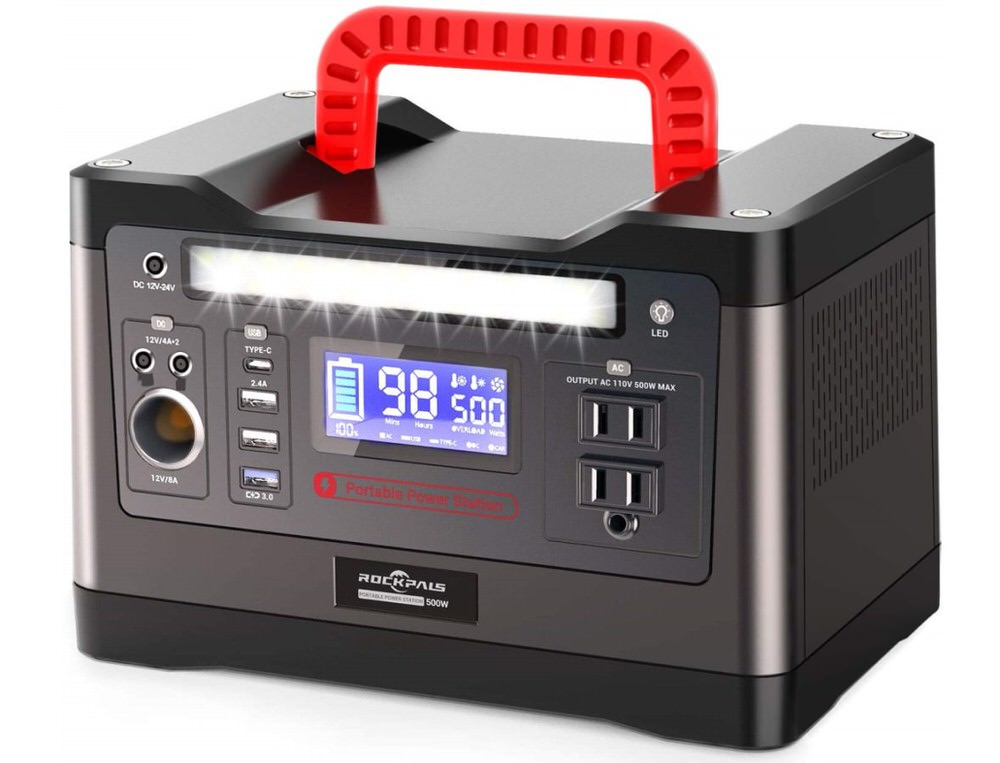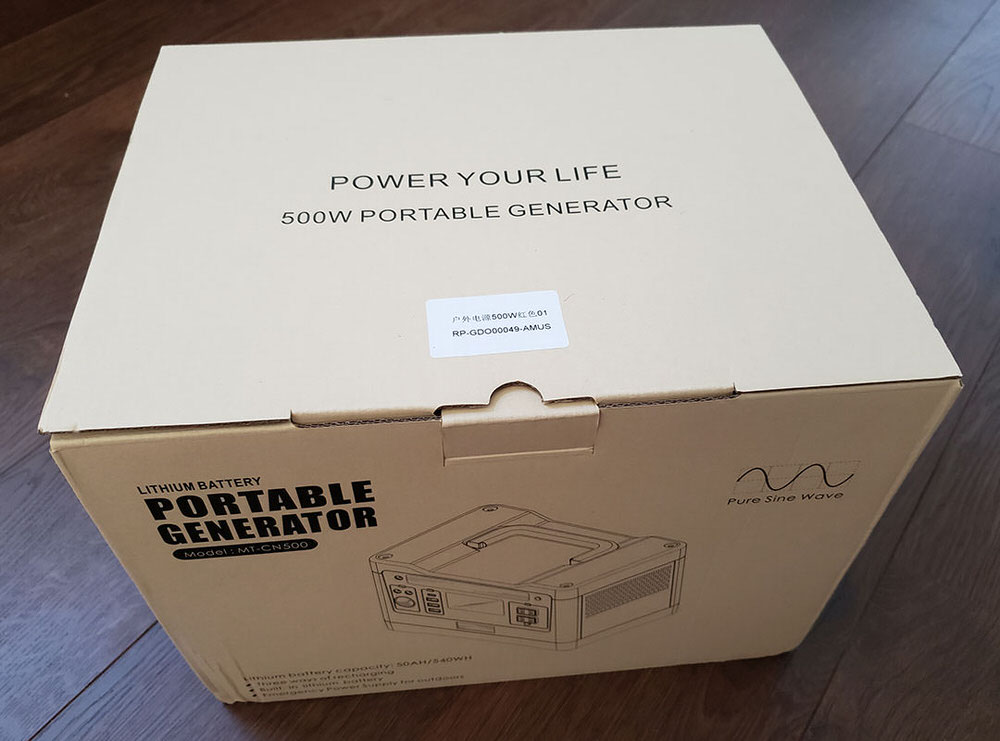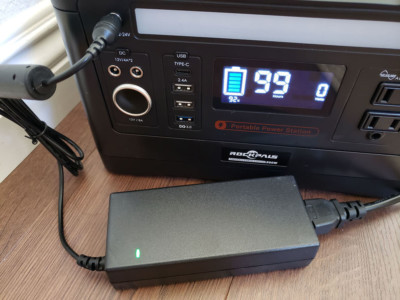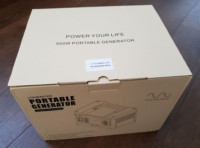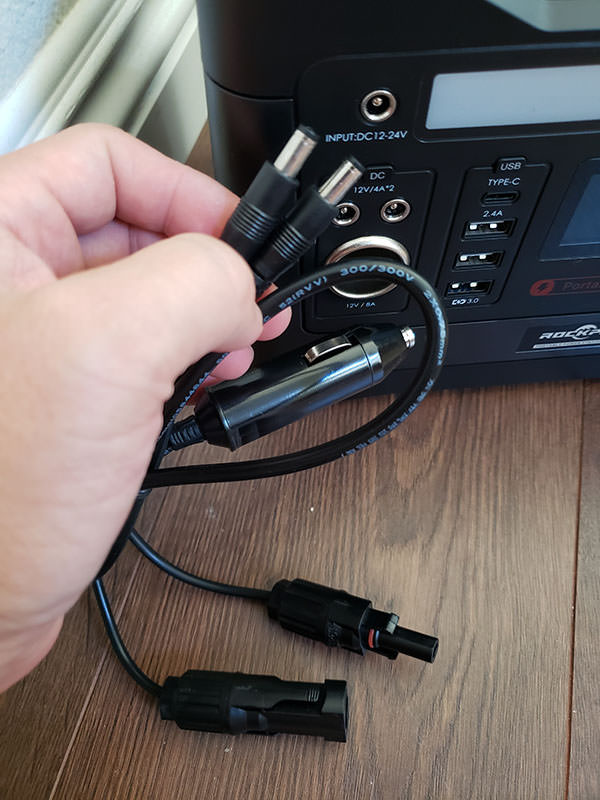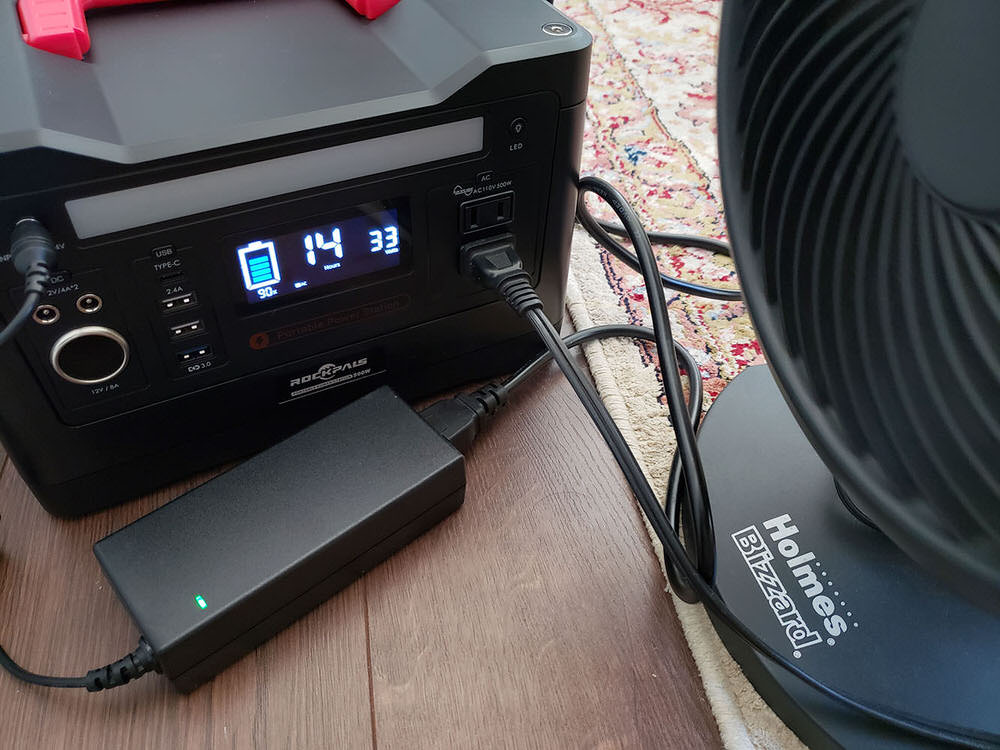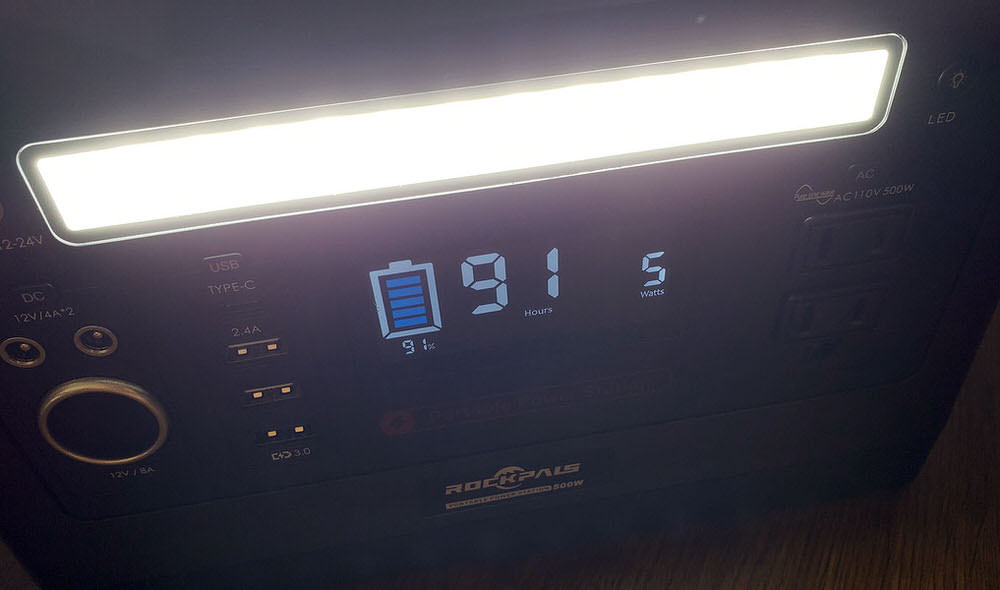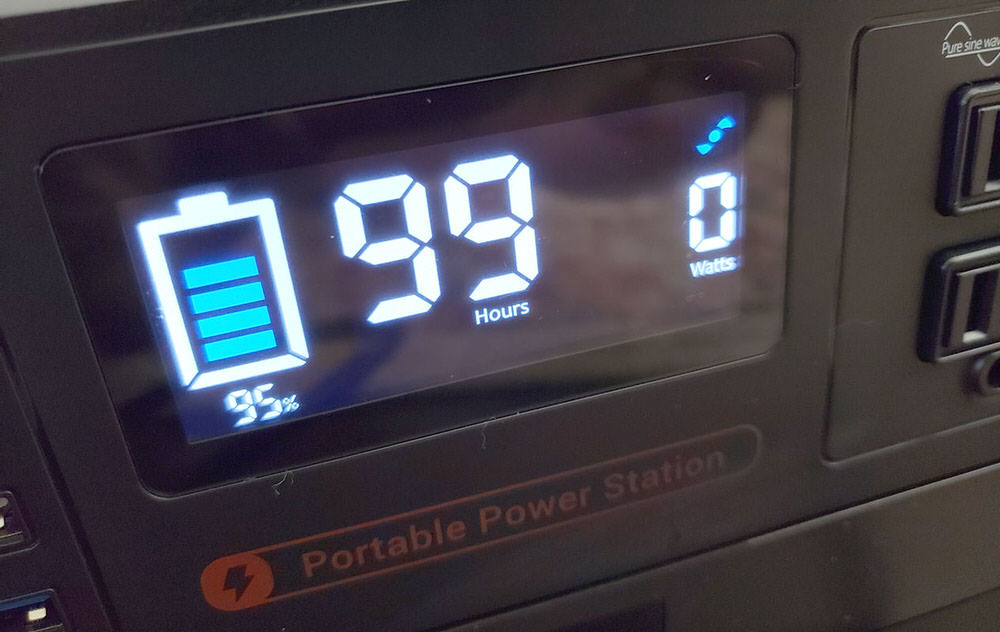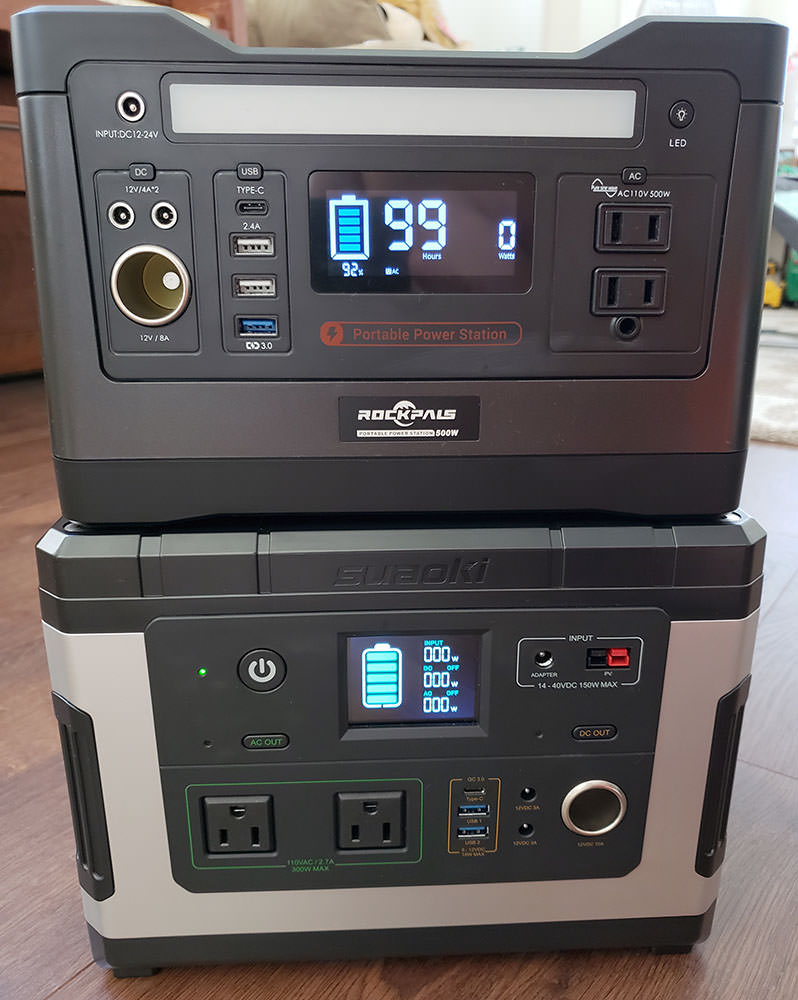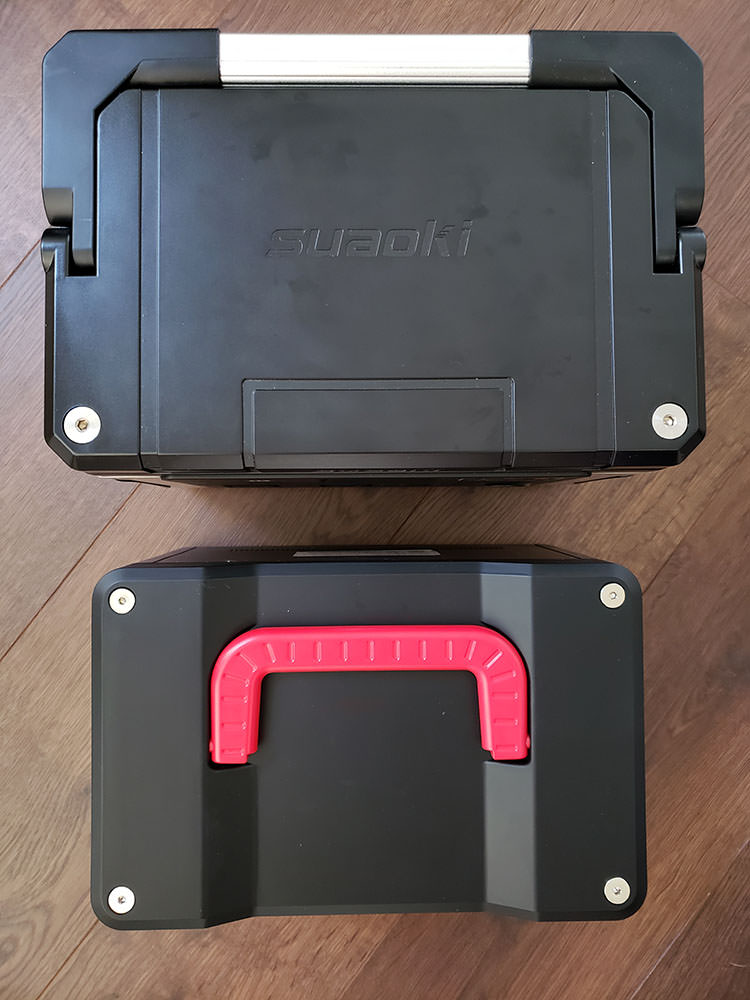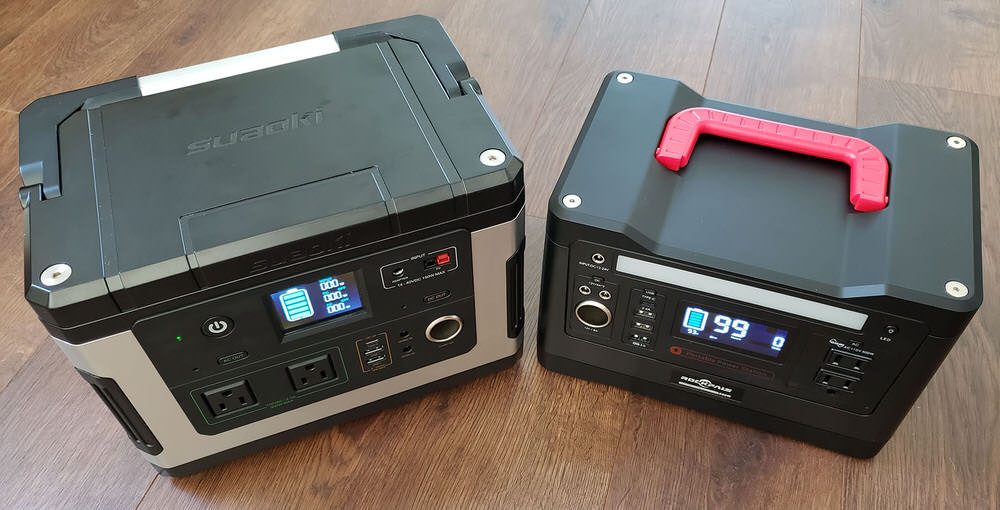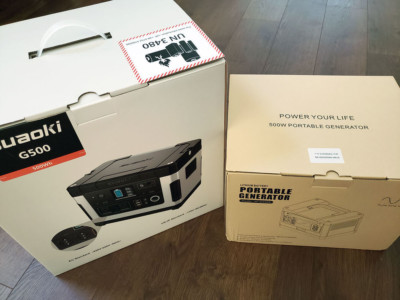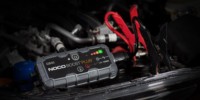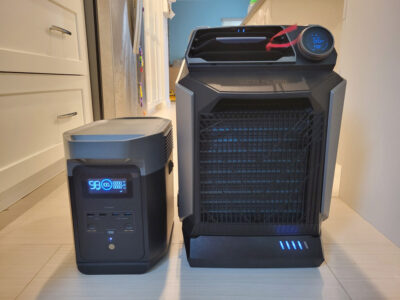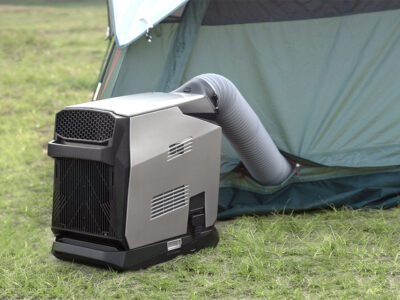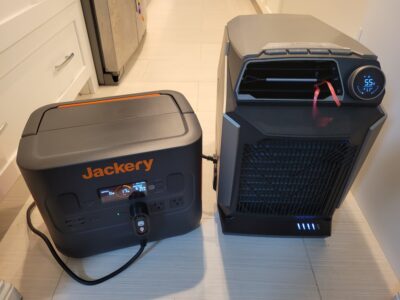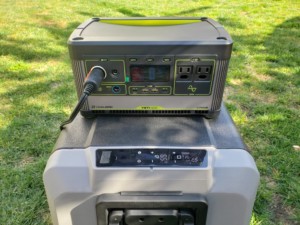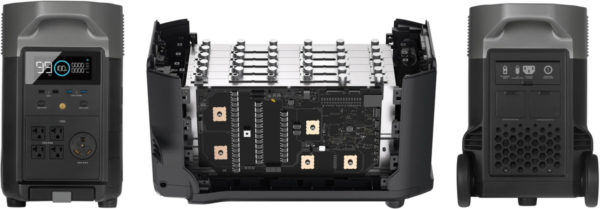Contents
Introduction
I am an avid hiker, camper, and wilderness backpacker and also am one of those guys who has a bug-out bag packaged for emergencies. Among the items I keep is a hand-crank AM/FM radio with USB charging. However, charging mobile devices with it is a great test against patience and endurance, especially if you have found yourself in an emergency situation. For that reason, I have invested in good-quality battery chargers (such as Anker) and ones with 3-panel solar charging capabilities.
There are times, however, where I want to be able to bring the comforts of electricity with me to go camping or picnicking, and when there is an extended power loss in our home. This is when I started looking at portable power generators. At first, I had bought a gas powered one, but I quickly did not appreciate it because of its maintenance requirement (you have to use it from time to time or flush the fuel to keep sediments from destroying the generator), loud noise, and unhealthy fumes. Granted, with an endless supply of fuel, you could generate power virtually forever, but I would rather keep it as a secondary option.
Next, I looked into the Goal Zero Yeti 400 Lithium, a $600 station that delivers 428 watt-hours (Wh) to power lights, a mini fridge to keep cool items our baby would need, and/or necessary, medical devices. It would be quiet and be virtually maintenance free. But the cost quickly made my wife and I balk. Still, I wanted something similar that could also be charged in a variety of ways, including solar in particular. One of my friends has had a Suaoki 150 Wh generator, and even though he loves it, I wanted something with a much larger capacity. So, I had given their Suaoki G500 (500 Wh) battery a try and loved it [Update 2021: No longer recommending the Suaoki]. Recently, I purchased the Rockpals 500W while it was on sale. The technical specifications sounded a little better than the Suaoki, and so I was intrigued to see how both of them would compare.
In a Nutshell
The Rockpals 500W is an excellent, portable power station that provides the largest capacity between the Goal Zero Yeti 400 and Suaoki G500 for about the same price. It has a slight edge over the Suaoki because of its portable, lighter size, and the built-in LED light bar is a nice touch for emergency use. There are some usability issues I did not like, such as having a 10-hour-long automatic shut-off for inactivity, and the product’s external packaging design is abysmal. Nonetheless, this is a product I recommend for the outdoor person and for emergency preparedness.
Tip: A battery power station like this one cannot be used to jump start a car. Instead, I suggest getting a small, portable one specifically made for that, such as my favorite: NOCO Genius Boost Car Jump Starter (Lithium Battery).
What’s Good? What’s Bad?
Pros
- Fairly priced
- $100 less than the Goal Zero. Same price as the Suaoki
- At 540 Wh, it has 120 Wh more capacity than the Goal Zero. 40 Wh more than the Suaoki
- Solar charging capable (MC4 cable included)
- Max 12-24V with no minimum wattage, though I recommend using a panel that’s between 30W – 150W at 18V
- I tested solar charging with Rockpals 80W and Acopower 100W
- On a bright, cloud-free, California fall day, the Rockpals provided 50-65W of charging. The Acopower between 60-80W
- Suaoki G500 accepts up to 150W solar panels. Rockpals 500W up to 200W
- WARNING: Do NOT use a solar panel that provides more than 24V and/or 200W input!
- Can power AC and DC at the same time (each port has a maximum, but the AC one can handle a continuous 500W, peaking at 1000W)
- Suaoki provides 300W with 600W peak
- Can power a multitude of devices: laptop, tablet, phones, lights, fans, CPAP medical device, projector, TV, mini refrigerator, speaker, camera, and DSLR battery charger
- Built-in LED light bar that uses about 4-5W, allowing it to stay on for more than 99 hours! That’s an insane 4 days!
- Neither Suaoki nor the Goal Zero provide such a light. Nice touch, Rockpals!
- Multiple charging cables included: AC brick, Car charger, MC4 solar charger. All charge the Rockpals through the same “DC 12V-24V” port
- Charge Times
- Wall charger: 7-8 hours
- 150W solar panel: 5-12 hours, depending on weather conditions
- See TIPS section below to calculate solar panel charging time
- Car port: based on estimates, it would take about 16 hours
- Multiple output ports
- 2x AC (110V-220V) (500W, peak at 1000W) — only ONE accepts 3 prongs
- 1x QuickCharge 3.0 USB, 2x USB-A (2.4A), and 1x USB-C
- 1x cigarette socket (10A, 12V or 24V with proper use, up to 96W)
- 2x DC outlets (max 12V, 4A, 48W)
- Suaoki provides the same output types with the following differences:
- 2x three-pronged AC outlets, 3x QuickCharge 3.0 USB
- Manual is sparse but well-written in English
- Suaoki’s provides instructions in multiple languages
- 50,000 mAh capacity at 11.1V or a whopping 150,000 mAh at 3.7V
- Suaoki’s is 45,900 mAh capacity at 11.1V and 137,700 mAh at 3.7V
- Built-in Overload, overcharge (automatically stops charging when the device is full), and short-circuit protection
- VERY compact at 10.24″ x 6.7″ x 6.82″
- Suaoki: 11″ x 7.5″ x 8.3″
- Goal Zero Yeti 400: 10.2″ x 8″ x 8″
- VERY portable at 12.13 lbs (Suaoki is 22 lbs, Goal Zero is 17 lbs)
- Professional look and sturdy feel, though I prefer the industrial look of the Suaoki’s
- LCD provides how many TOTAL Watts (AC and DC combined) are provided by the power station
- Suaoki displays the Wattage separately for DC and AC, which I prefer
- Calculates the estimated hours remaining based on current wattage being used — a nice, user-friendly touch
- The number of bars on the battery graphic shows the remaining capacity left. Each bar is 20%
- DC, USB, and AC outputs can be individually controlled
- Suaoki controls DC and AC separately, but groups USB with the DC Out
- Pure Sine Wave output to protect against damage to sensitive electronics
- 12 month warranty + 6 more months upon registration
- Suaoki provides 24 months, Goal Zero is 12 months
- Technical support has been quick, and I believe Rockpals is based in California
Cons
- Inexplicably, this Rockpals unit did NOT automatically power off after inactivity
- Manual mentions nothing about auto shutoff, but the product description on Rockpals’ website states an auto shut off after 10 HOURS — Hours!
- When I asked Rockpal support, they stated that most of their customers prefer automatic off after a long period as some devices don’t constantly use power. Having the shutoff occur earlier would render those types of devices unusable. I then asked support that having the option to choose the timeout value would be great to have in future products
- Suaoki turns off after no output has been detected for 10 mins
- Manual mentions nothing about auto shutoff, but the product description on Rockpals’ website states an auto shut off after 10 HOURS — Hours!
- No carry bag included, making it necessary for you to find your own pouch to carry the included charging cables
- Battery cannot be replaced once the 500x lifetime charge cycle is over. This is the same for the Suaoki
- Goal Zero’s battery is user replaceable
- Not waterproof. Keep it away from water splashes, rain, and pool!
- Battery slowly drains over time even when station is powered off
- Rockpals states a 2-3 year hold from a full charge before it is completely drained
- No master power off button to turn off ALL outputs at the same time
- You have to manually switch off each type: DC, AC, USB
- All 3 must be off before the entire unit itself is turned off
- The Suaoki can power off both the DC and AC outputs through a single, master button
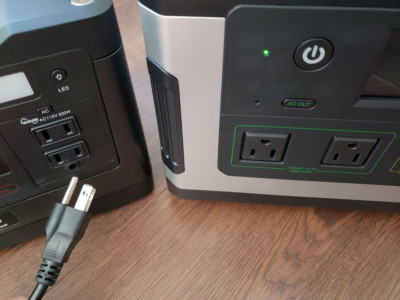
3-pronged AC Outlets
- The Suaoki requires you to hold the DC or AC button for 2 seconds before it turns on/off that output
- This Rockpals does not, and this can lead to accidentally turning on/off the output during transport
- Couple this with a 10 HOUR auto-shutoff, and this can be a bit concerning for the battery’s capacity
- No granular message if an error occurs
- If a problem happens, you will see either the AC, DC, or USB text on the LCD blink. This indicates which output has the problem, but you will have no idea what exactly the issue is
- The Suaoki provides an error code (such as “E 14”, meaning: AC output was overloaded), helping you quickly troubleshoot the issue
- Only 1 out of the 2 AC outlets accepts a 3-pronged plug
- Suaoki provides two 3-pronged AC outlets
- Emergency LED light bar is a VERY nice touch, but it could be further improved if its mode could also be switched to Blinking and SOS patterns
- Cannot be daisy-chained to other Rockpals products to extend the battery capacity
- Some Goal Zero stations can be hooked up to other ones so power can be provided for an even longer time without needing to switch
- Product packaging, though well-protected, looks cheap from the exterior with its plain, cardboard design. Based on packaging alone, I would have grabbed either the Suaoki or the Goal Zero
Usage
- To turn ON or OFF the DC, AC, or USB output, press the “DC”, “AC”, “USB” button
- Push again to turn off
- Note that this single-press (without hold) can lead to accidentally turning on or off the power station. The Suaoki requires you to push a button for 2 seconds before it would switch the output on or off
- To reset an Error condition that’s shown on the LCD, turn OFF the respective DC, AC, or USB output, and back on
Tips
- To calculate how much Wattage a device uses: Voltage x Amperage
- For example, if a vacuum is 120V and 9.5A, its Wattage is 1,140W (120 x 9.5)
- Since this power station can only accept a peak of 1000W and sustained power of 500W, the vacuum cannot be used. In the video, however, you can see that the vacuum does turn on for a few seconds before being shut down. The Suaoki could not do that!
- Note: If a device draws more than 500W for an extended period of time, the power station will shut off as a safety precaution
- To calculate how long a device could be used for: 540 Wh x 0.85 / Device Wattage
- About 10-15% of power is lost during power conversion, which is normal for all power stations
- For example, if a device uses 60W, it could last up to about 7.65 hours (540 Wh x 0.85 / 60 W)
- The Amazon TV I have uses about 100W
- If this Rockpals is full at 540 Wh, this would result in about 4.5 hours of continued usage (540 x 0.9 / 100)
- Yes, you CAN watch TV for nearly 5 hours while camping, but please remember what is more important when you go outdoor: enjoy nature with your friends and family!
- To calculate how long a device would need to charge: 540 Wh / Device Wattage
- For example, if a device uses 60W, it would take 9 hours to charge (540 Wh / 60 W)
- To calculate how long the Rockpals 500W would need to charge via solar panel: 500 W / (Panel Wattage x [0.5 or 0.75])
- In a perfect lab environment, solar panels charge at the indicated wattage (ie. 150 W). Outdoors, expect to only receive 50-75% on a good, sunny day (ie. 75 W – 112 W)
- For example, if a solar panel is rated for 100W, it could take as fast as 6.67 hours [500 W / (100 W x 0.75)] to charge, depending on environmental conditions and the panel’s age
- Tip: Even if it is overcast, the panels will STILL collect solar energy. So, keep charging!
Most devices power on at a higher (Peak) wattage than when they are already on (Continuous). Therefore, if its peak exceeds the power station’s max, it may not be able to start
- Always make sure you test your devices with the power station before you depend on it
- For example, items that may not work include some rice cookers, 12V DC air pumps, coffee makers, and hair dryers. Use the above formula to calculate the device’s wattage
- If using the car charger, make SURE you only charge this station while the car is RUNNING. Otherwise, you’ll deplete your car’s battery and leave you stranded
- If charging with the solar panel, be sure to keep the station out of direct sunlight as it could overheat
- You should NOT charge the power station AND use it to power something else at the SAME time as it can damage the battery
- Either charge OR use it to power something else, but not both concurrently
- Rockpals states that charging and using is not a problem, but I lean on the side of caution
- Suaoki advises against charging and using at the same time
- NEVER charge the power station itself in below freezing temperatures, or you will damage the Lithium-ion battery AND potentially limit its overall capacity
- However, you CAN use the station to power other devices
- I do not know if it has a low temp charging protection (manual does not state so). The Suaoki does AND starts charging again once the temp goes above 40F
- If you have to use the station in below freezing temperatures, keep the power station in an insulated cooler and connected to a power source (ie. solar panels). The heat generated by the battery will keep it running as best as it can
- A solar panel is NOT required to use this power station
- Do not use this (or any power station) in a tightly enclosed area as the station can overheat
- If charging the station with the car charger, you cannot charge it to 100% capacity with a 12V outlet. If you have a 24V outlet, however, you could
- To prolong the battery lifetime while in storage, keep the station fully charged every 3 months
- NOT using the battery for a very long time can actually hurt its lifetime
- There is no “memory effect” in this station’s battery
- Note: It is better to NOT let it completely drain before recharging
- According to the seller, the lifetime cycle is 500 times, which is the same for both the Goal Zero and Suaoki
- The battery is NOT replaceable. Suaoki’s is not replaceable either, but Goal Zero’s is
CAUTION: Lithium-ion (LiFePO4 and NMC) batteries do NOT like to remain discharged at 0% for prolonged periods of time. If you let your battery stay at 0% for too long, you may not be able to charge it again without specialized equipment.
Jump Start Car?
A battery power station like this one cannot be used to jump start a car. Instead, I suggest getting a small, portable one specifically made for that, such as my favorite: NOCO Genius Boost Car Jump Starter (Lithium Battery).
Portable Air Conditioner
The EcoFlow Wave is a portable air conditioner that accepts both AC and DC input. The company, of course, recommends using its own Delta power stations for better efficiency and longer runtime because they can draw directly from DC power. In a pinch, any battery or generator capable of providing the Wave-required input wattage could be used, but keep in mind that AC power loses some energy due to conversion to DC.
Final Thoughts
Overall, I have found this to be an excellent item to have in my camping inventory. In fact, compared to the Suaoki G500, this Rockpals 500W is much more portable and light, making it suitable for emergency use. With that said, both the Suaoki and Rockpals stations had been very popular among all campers to run a wide variety of devices, including several small fans inside our tent during the hotter, windless, daytime temperatures. For its price and larger capacity than the Goal Zero, I am quite happy with this Rockpals. If you asked me whether to recommend the Rockpals or the Suaoki, I recommend both, though the former has a slight edge due to its portability. The Goal Zero Yeti 400, though a more established brand in retail stores, is much more expensive for less capacity.
Where To Buy
- Rockpals 500W Power Station
- Goal Zero Yeti 400 Lithium Power Station
- Solar Panels: Rockpals 80W – See our Review / Acopower 100W
Related Posts
- Power Generators: Gas vs Propane vs Battery Station (and Solar)
- Ultimate Reference: Power Station Comparison
- EcoFlow Wave Portable Air Conditioner
- Reviews
- Goal Zero vs Jackery: Yeti 1000 Core vs 1000X vs Explorer 1000
- Goal Zero Yeti 1500x / Yeti 1000x / Yeti 500x
- Jackery Explorer 2000 Pro / Explorer 1000 / Explorer 300
- EcoFlow Delta Pro LiFePO4
- Bluetti EB70S LiFePO4
- BigBlue Cellpowa500 LiFePO4
- nrgGo 400
- Quick Look
- Announcements
Other Useful Topics
Power Station Comparison
Check it out!
Ultimate Reference: Power Station Comparison – We summarized the specifications of many of the power stations we had come across or reviewed all in one place.
Gas/Propane Generators vs Battery Power Stations
In July 2020, I wrote about this topic after many asked what their differences were. In short, gas/propane generators can run virtually forever but are loud, dirty, and potentially quite dangerous. Battery power stations, on the other hand, are more portable, silent, less volatile, and can be operated indoor, but depend on external power (like solar) to recharge. Where gas/propane are used to GENERATE electricity, batteries STORE them for later use. Personally, I am a fan of the latter because they are so easy to carry around and are safer to use.
Battery Technology and Safety
Goal Zero debuted with Lead-Acid batteries that were bulky and heavy. Today’s devices use Lithium-ion — commonly Nickel Manganese Cobalt (NCM) or Lithium Iron Phosphate (LiFePO4 / LFP) chemistries — for more power in a smaller, lighter package. NMC, however, is more volatile than LiFePO4 and becomes riskier as more cells are packed together. Goal Zero and Jackery used NMC for some time whereas EcoFlow and Bluetti use LiFePO4. Jackery launched its first LiFePO4 model in mid-June 2023 and Goal Zero in October that year.
- How much energy a battery can store is measured in Wh (Watt-hours), and how much power is used or produced in W (Watts)
- The higher the Watt-hour (Wh) capacity rating, the more dangerous the battery could become if not handled right
The quality of the battery cells and the BMS (Battery Management System) are crucial for safety.
Cell Manufacturers
Battery cells made by LG and Sony are among the best in the hobbyist world as are Sanyo/Panasonic and Samsung. Goal Zero uses LG. Jackery also uses LG or BAK (a leading Chinese brand). EcoFlow makes its own. During my years of research, I found that use of lower-quality batteries could pose a serious risk to life and property and should become a crucial part in deciding what to buy.
Safety
The second part in a battery’s safe operation depends heavily on the design and BMS (Battery Management System). Some BMS manufacturers, unfortunately, overstate their capabilities that could lead to catastrophic failure.
- Design should allow for proper, thermal cooling, use quality components, and obtain proper certifications
- Batteries made by known manufacturers are less likely to fail
- BMS should sufficiently restrict the battery from going past its capabilities
Li-ion: LiFePO4 vs NMC
There had been a lot of debate over whether Nickel Manganese Cobalt (NMC) or Lithium Iron Phosphate (LiFePO4) was better. Both are Lithium-ion batteries. Goal Zero, Jackery, and most of today’s power station manufacturers use NMC, but why do EcoFlow and Bluetti use LiFePO4 when they are bulkier and heavier? There are important distinctions, but the best battery is the one that meets all or most of your unique needs.
Charge Cycles
One of the most significant differences — and buying factors — is the charge cycle count for both battery chemistries. It measures how long the battery can be used for before it must be replaced or thrown away. LiFePO4’s count is as high as 4,000 cycles (as of 2023) whereas NMC is 500+. However, both have a useful life that can range between 3,000 – 5,000 cycles (even as much as 7,000 with proper care). But how does the count determine longevity?
Let’s look at Li-ion NMC as an example. It loses about 20-25% of total capacity after every 500 charge cycle. That means after the first 500 cycles, the battery drops 20% from when it was new, then another 20% after the next 500 cycles, and 20% again after that one. It would take roughly 1,500 charging cycles to have the battery last only half as long as when it was brand-new. Thus, it should be usable for 2,000+ cycles or about 6-10 years. Li-ion LiFePO4 can last longer.
CAUTION: Lithium-ion (LiFePO4 and NMC) batteries do NOT like to remain discharged at 0% for prolonged periods of time. If you let your battery stay at 0% for too long, you may not be able to charge it again without specialized equipment. Keep them at between 20-80% while in storage to maximize their lifetime.
LiFePO4 Advantages
- Safer, less volatile, and thus cheaper to manufacture
- Higher charge cycle: 1500-2000 (10+ years). NMC: 500+ (6-10 years)
- Usable in more extreme temperatures (-4F/-20C to 176F/80C). NMC: only 140F/60C max
- Holds 350-day charge. NMC: 300
NMC Advantages
- Smaller and lighter. Allows for more portable products
- Faster charging

